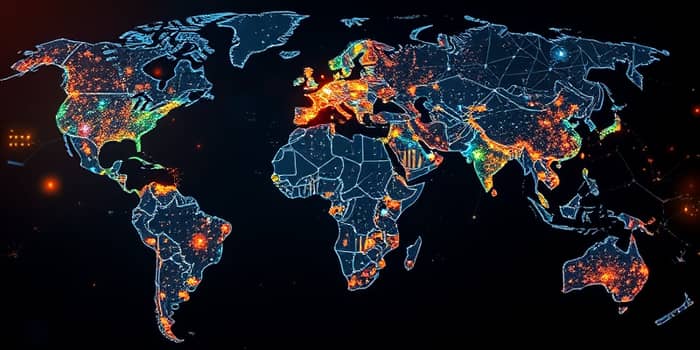
Silicon Valley may have pioneered the modern tech revolution, but an array of global ecosystems is now taking up the torch. From Bangalore’s bustling startups to Stockholm’s music tech breakthroughs, innovation is flourishing far beyond the Bay Area.
For decades, Silicon Valley stood as the undisputed epicenter of technological advancement. Giants like Hewlett-Packard, Apple, Google, and Uber trace their origins to this region.
In 1999, roughly a third of the world’s venture capital funding flowed into Silicon Valley. By 2011, 20 of the world’s 27 unicorns were headquartered in the United States. Yet today, 51% of tech VC funding is directed to companies outside America, signaling a distributed innovation landscape where multiple hubs compete and collaborate.
A new wave of cities has risen, each with unique strengths and sectoral focus. These hubs illustrate how diverse factors—from military training to creative culture—fuel innovation worldwide.
While each hub has its own story, successful ecosystems share common pillars that fuel sustained growth and innovation.
Southeast Asia’s digital economy is projected to reach $1 trillion by 2025, with Singapore at its helm as a regional HQ. Berlin’s IT services generated €51.2 billion in 2024, supported by over 40% of the city’s businesses operating in tech.
Paris secured $7.8 billion in VC funding in 2024, half of which went to AI firms. Station F, the world’s largest startup campus, hosts more than 1,000 companies and has launched over 5,000 projects.
Tel Aviv, known as the “Startup Nation,” boasts over 6,000 startups and the highest density of entrepreneurial ventures globally. Stockholm’s coding workforce (18%) produces the highest number of unicorns per capita in Europe.
As mature markets plateau, emerging centers compete fiercely for investment. The democratization of high-speed internet and cloud computing allows companies to be born global, serving clients worldwide from anywhere.
Continuing momentum depends on government and private sector cooperation to fund research, infrastructure, and education. New US federal initiatives, earmarking ~$2 trillion for innovation, aim to decentralize activity from Silicon Valley to cities like Indianapolis and Tulsa.
The most resilient tech hubs engage five stakeholder groups, each playing a pivotal role:
By mapping local strengths, targeting key sectors, and fostering cross-border collaboration, cities can replicate the success of established hubs and carve their own paths to prosperity.
Innovation no longer flows from a single valley. From Bangalore’s cost-effective engineering talent to Tel Aviv’s cybersecurity prowess and Singapore’s strategic gateway, a mosaic of global centers now drives the tech revolution.
As venture capital continues to diversify and digital connectivity shrinks distances, the next unicorn might emerge from any corner of the globe. By leveraging local advantages, nurturing ecosystems, and forging international linkages, these emerging hubs are not just following Silicon Valley’s playbook—they are writing a new chapter in the history of innovation.
References













